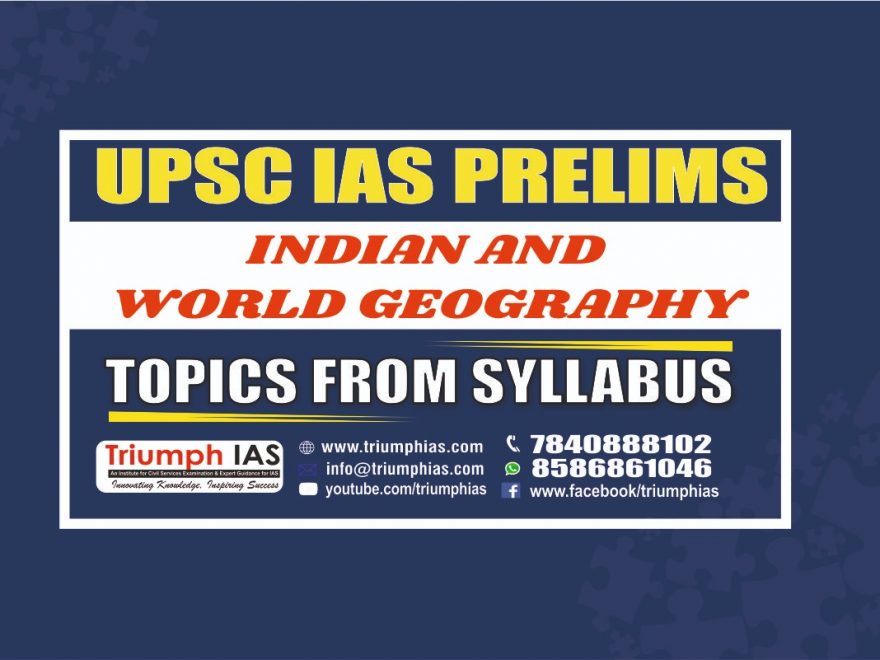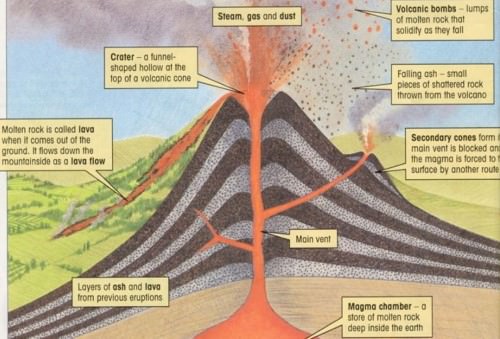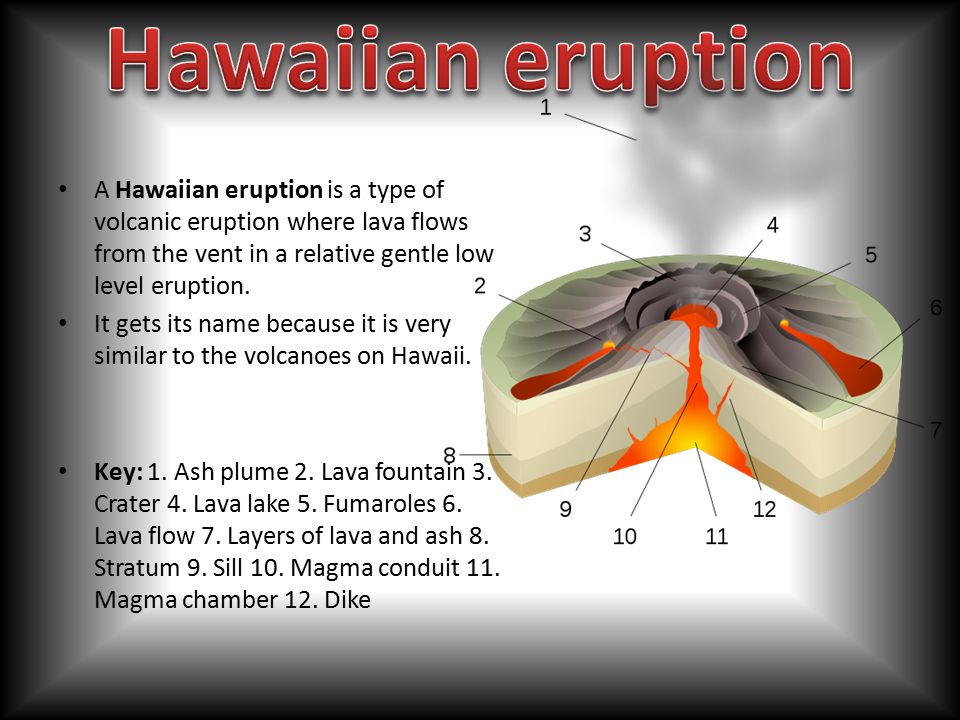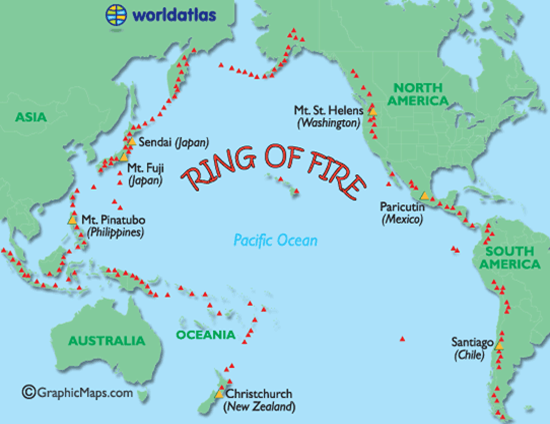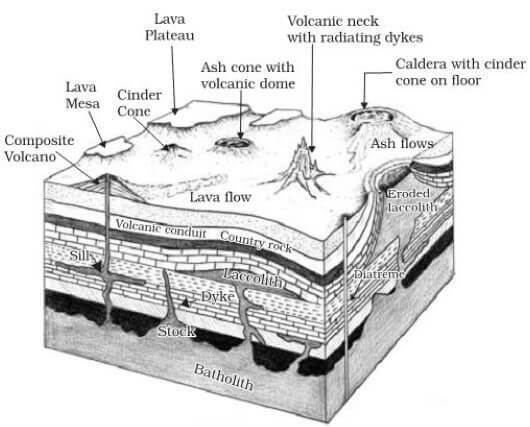Relevance: Prelims: Geography
Volcano is an opening in the Earth’s crust, through which molten material, violent gases as well as pyroclastic materials erupt suddenly.
Volcanism or volcanicity includes all the phenomena associated with movement of molten material (magma) from the interior of the Earth to the surface. Volcanoes can be classified as under On the Basis of Type of Eruption
Hawaiian Type
In this type of volcano, extremely fluid lava, which is mostly basaltic, comes out on the surface of the Earth, It spreads over large areas.
Strombolian Type
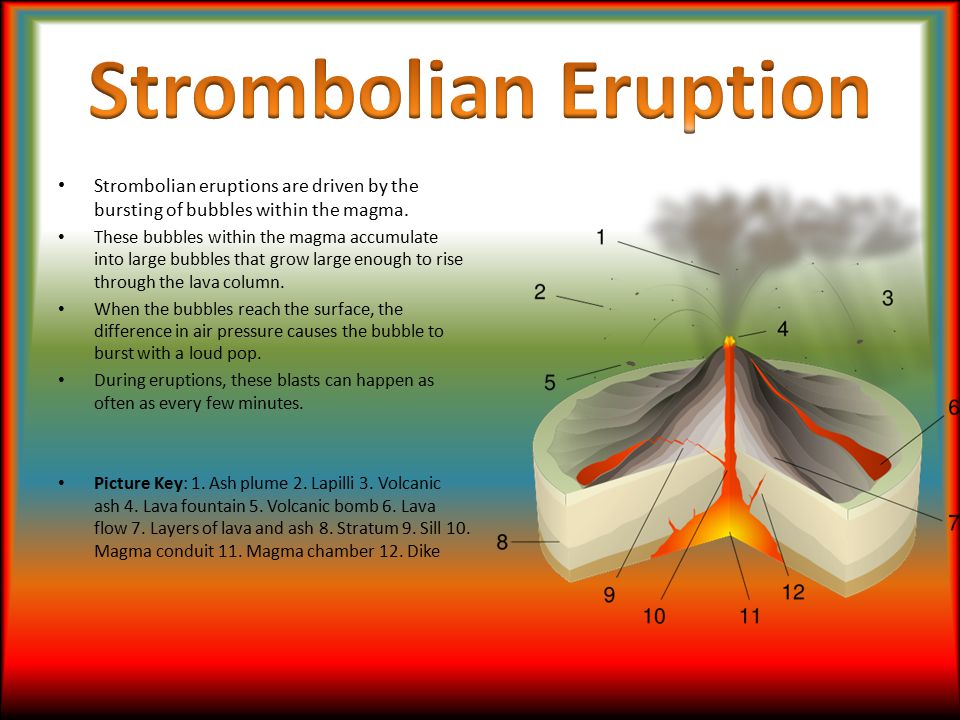
These are less explosive. e.g. Mauna Loa Volcano on Hawaiian island Strombolian type are the most typical volcano.
There are several small explosive activities, where lava is more viscous. It has a power to explode the crust, e.g. Stromboli volcano, Lipari island, North Sicily.
Volcanian Type
In this type, lava is very viscous and the eruptions takes place at a longer intervals. Large quantities of pyroclastic material is erupted. e.g. volcanoes form Lipari island group of Mediterranean sea, Vesuvian Type or Plinian Type In this type, long intervals take place between two eruptions,
These are extremely violent. Lava is highly viscous e.g, volcano that once existed near Naples in Italy.
Various Volcanic Belts
Circum-Pacific Belt It extends across the Kamchatka Peninsula, Kuril Islands, the Islands of Japan, Philippines, New Guinea, New Zealand and the Solomon Islands. It also passes through the Antarctica and the Western coast of North and South America.
Mid-Continental Belt (Volcanic zones of convergent continental plate margins). It includes volcanoes of Alpine mountain chain, the Mediterranean sea and the fault zone of Eastern Africa of Stromboli, Vesuvius, Etna, Kilimanjaro, etc.
Mid-Atlantic Belt In this belt the volcanoes are fissure eruption type, e.g, Iceland, Canary Islands, Cape Verde, Azores, etc. Magma is a molten silicate material. These are located on divergent plate boundary. It is not entirely liquid but a combination of liquid, solid and gas mixture.
Topographic Features of Volcanoes
Magma is of two types-basaltic and granitic. Basaltic magma is fluid while granitic magma is viscous. Once magma has generated, it being lighter than the adjoining rocks, moves upward towards the surface and gives rise to certain topographic features. When the features have formed beneath the surface, they are called intrusive features and when formed on the surface of the Earth, they are called extrusive features.
Intrusive Features
Lopoliths
Saucer shaped bodies concordant to the structure of the rocks into which they are intruded.
Batholiths Largest intrusive bodies of elongated, oval or isometric shape that are usually found in central parts of folded regions.
Sills
Thin sheet-like intrusions of highly fluid basaltic magmas injected between bedding planes, which separate layers of sedimentary rocks.
Laccoliths
Huge masses of igneous rocks bent upward to form dome and a level base fed by pipe like conduit from below.
Dykes
Formed when magma squeezes into fractures of the surrounding rock and cools vertically cutting across the bedding planes.
Extrusive Features
Flood Basalts Formed by fissure eruption with no explosive activity due to the less viscous basaltic lava. e.g. Deccan trap.
Shield Volcanoes Huge domes of basalt formed as a result of continued outpouring of great quantities of highly fluid basaltic lava. e.g. Mt Mauna Kea and Mauna Loa on Hawaii.
Ash or Cinder Cone Formed when the eruption is of central type with a predominance of pyroclastic materials. e.g. Paricutin, Mexico.
Shield Type Such volcanoes range in size from less than 20m across. It is interesting to record that the total height of Mauna Loa from it’s base at sea floor is 4170m above mean sea level. So, totally it becomes 9000 m higher than the elevation of Mt. Everest which is of 8850 m.
Composite or Strata Cone It is the highest of all volcanic cones, which exhibit thorough stratification of pyroclastic and lava. These are built up by alternate layers of lava and fragmental flows. e.g. Pinatubo of Philippines, Fuji in Japan.
Parasitic Cone It formed in the vicinity of the main cone and feed on the main cone.
Craters
It is a pit at the top of a volcanic vent.
Calderas It is a large depression more or less circular in plan with diameter several times that of a crater.
Hot springs
Ground water, coming in contact with the magma, gets heated beyond 36° C. It comes to the surface as hot spring. e.g. Ladakh, Manali, volcanic regions of Iceland, Yellow Stone National Park.
Geyser
It is a special type of hot spring, which ejects steam and superheated water from an underground source through a hole in the ground, intermittently.
For example, old faithful geyser in the USA, which erupts faithfully after every
66 minutes.
Fumaroles
are characterised by full-scale continuous jet-like emission of hot water from a vent.
Central Eruption or Explosive Type
Here the magma comes with great force through the small vent and spread to a distant position. e.g. Hawaiian type, Strombolian type, Pelean type, Vesuvious type, Volcanian type.
Fissure Eruption or Quiet Eruption Large
quantities of lava quietly flow up from fissures and spread out over the surrounding areas. Successive flow of lava results in the growth of Lava plateau. e.g. Deccan plateau.
For more such notes, Articles, News & Views Join our Telegram Channel.
Click the link below to see the details about the UPSC –Civils courses offered by Triumph IAS. https://triumphias.com/pages-all-courses.php

